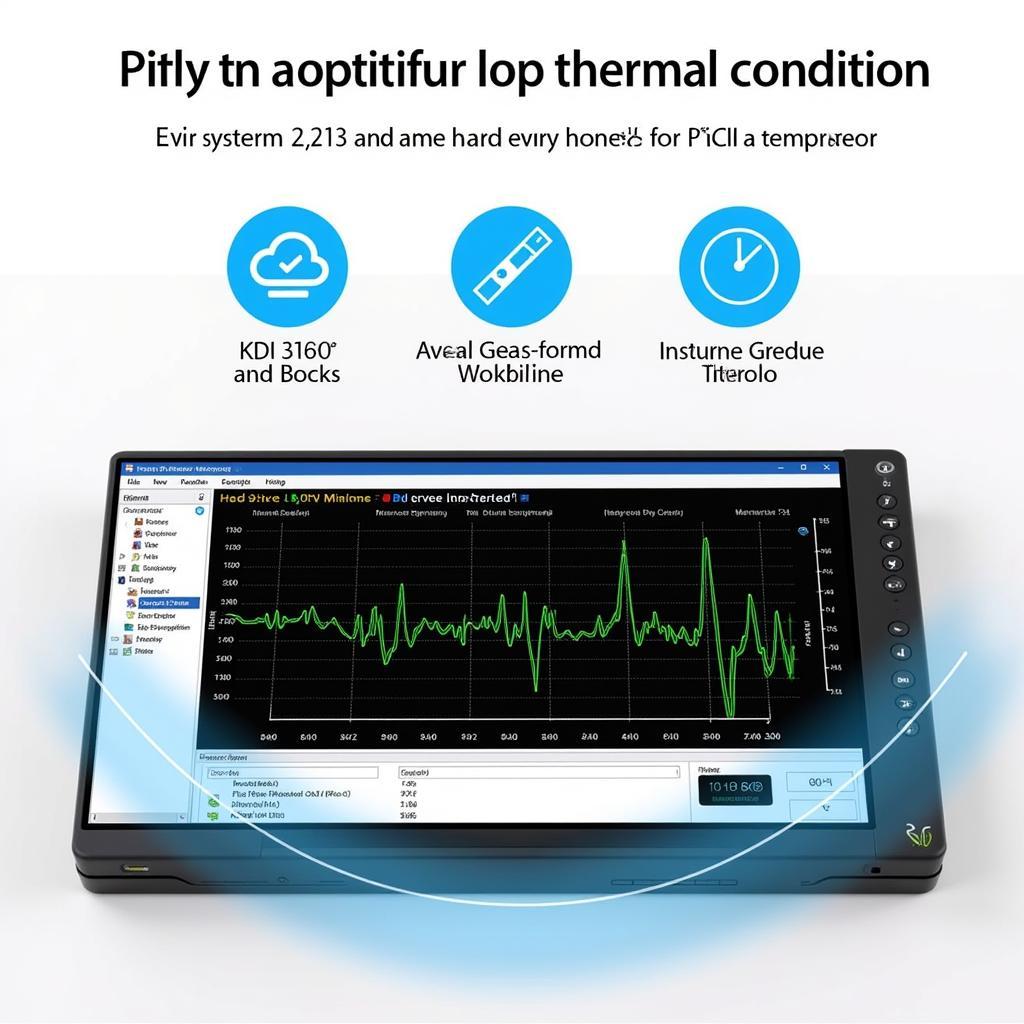Hard Drive Fan Control is a crucial aspect of maintaining optimal PC performance and ensuring the longevity of your storage devices. By effectively managing your hard drive fan speed, you can strike a balance between efficient cooling and minimal noise levels.
Understanding the Importance of Hard Drive Fan Control
 Monitoring Hard Drive Temperature
Monitoring Hard Drive Temperature
While modern hard drives are designed to withstand a certain range of temperatures, prolonged exposure to excessive heat can lead to performance degradation, data corruption, and even premature drive failure. Conversely, running your fans at maximum speed constantly can result in unnecessary noise pollution and increased energy consumption.
This is where hard drive fan control comes into play. By allowing you to adjust your fan speed based on your drive’s temperature, you can ensure efficient cooling only when needed, maximizing both performance and lifespan.
Methods of Hard Drive Fan Control
There are several ways to control your hard drive fan speed, each with its own advantages and disadvantages:
1. BIOS/UEFI Settings
Most motherboards come equipped with built-in fan control options within their BIOS or UEFI settings. Accessing these settings allows you to configure fan curves, which automatically adjust fan speed based on specific temperature thresholds.
2. Fan Control Software
Numerous third-party fan control software solutions offer advanced customization options. These programs provide real-time monitoring of system temperatures, including your hard drives, and allow you to fine-tune fan curves, create custom profiles, and even set manual fan speeds.
3. Hardware Fan Controllers
For enthusiasts seeking the utmost control, hardware fan controllers provide dedicated physical interfaces for managing fan speeds. These devices often feature knobs, buttons, or LCD screens that allow you to precisely adjust fan settings without relying on software.
Factors Influencing Hard Drive Temperature
Several factors can influence the temperature of your hard drive:
- Ambient Temperature: The temperature of your surrounding environment directly impacts the cooling efficiency of your PC.
- Airflow: Proper airflow within your computer case is essential for dissipating heat generated by components like your hard drive.
- Drive Usage: Intensive tasks such as gaming, video editing, or running benchmarks can significantly increase hard drive temperature.
- Drive Age and Health: Older drives or those nearing the end of their lifespan may generate more heat due to wear and tear.
Finding the Optimal Fan Curve
The ideal fan curve for your hard drive will depend on your specific hardware configuration and usage patterns. However, a good starting point is to aim for a gradual increase in fan speed as the drive’s temperature rises. This approach ensures sufficient cooling without excessive noise at lower temperatures.
Common FAQs about Hard Drive Fan Control
Q: What is a safe temperature for my hard drive?
A: Generally, hard drive temperatures between 30°C and 45°C (86°F and 113°F) are considered safe. However, it’s always best to consult your drive manufacturer’s specifications for specific recommendations.
Q: Can I control my laptop’s hard drive fan?
A: While most laptops offer limited fan control options, third-party software may provide some degree of customization.
Q: Should I be concerned about fan noise?
A: A certain level of fan noise is normal, especially under heavy load. However, excessive or unusual noises could indicate a problem that needs addressing.
Need Assistance with Your Hard Drive Fan Control?
Contact our team at Phone Number: 0903426737, Email: fansbongda@gmail.com, or visit us at Address: To 9, Khu 6, Phuong Gieng Day, Thanh Pho Ha Long, Gieng Day, Ha Long, Quang Ninh, Vietnam. We’re available 24/7 to provide expert support and guidance.


